#johan joseph zoffany
Explore tagged Tumblr posts
Text

Queen Charlotte (1744-1818) with her two Eldest Sons
Artist: Johan Joseph Zoffany (German, 1733-1810)
Date: 1764
Medium: Oil on canvas
Collection: Royal Collection Trust, United Kingdom
Description
This painting shows the Princes appearing only fractionally older than the painting of George, Prince of Wales and Frederick, later Duke of York at Buckingham House (Royal Collection), suggesting that both works must have been on the artist’s easel simultaneously. This might explain why the head of the Queen here and in the portrait on the wall of the other painting follow the same pattern. The setting here is also Buckingham House, but this time the King’s apartments on the ground floor garden façade; these were less redecorated and therefore preserved more of the character of the 1702-5 building campaign and can be seen in an anonymous view of the rear of the house painted at this time.
Zoffany has placed the Queen’s dressing table directly in front of the back door at the centre of the garden façade — the glimpse of formal garden, the height of the aperture and the fenestration of the rooms visible beyond admit of no other explanation. This is clearly a very unlikely position for a dressing table, and suggests either that the Queen was temporarily occupying these rooms while her apartments above were being redecorated or that Zoffany has stage-managed the scene in order to achieve the effect of vistas opening in every direction.
#painting#indoor scene#queen charlotte#young boys#motherhood#buckingham house#garden#dressing table#full length#seated#drapery#chairs#costume#british history#british queen#british royal family#stagues#decor#door#hallway#textiles#johan joseph zoffany#german painter#european art#royal collection trust#18th century painting#oil on canvas#fine art#artwork#portrait
23 notes
·
View notes
Text

Patrick Heatly
Artist: Johan Joseph Zoffany (German, 1733–1810)
Date: 1783-1787
Medium: Oil on canvas
Collection: Yale Center for British Art, New Haven, CT, United States
Description
The son of an American merchant, Patrick Heatly (1753-1834) served in the administration of the East India Company. This portrait is thought to show Mr. Heatly waving farewell to his beloved sister Temperance before she sailed home to America.
#portrait#painting#male figure#dog#oil on canvas#fine art#oil painting#artwork#patrick heatly#landscape#costume#hat#rocks#sorrow#walking stick#east india company administrator#german culture#german art#johan joseph zoffany#german painter#european art#18th century painting#yale center for british art
12 notes
·
View notes
Text
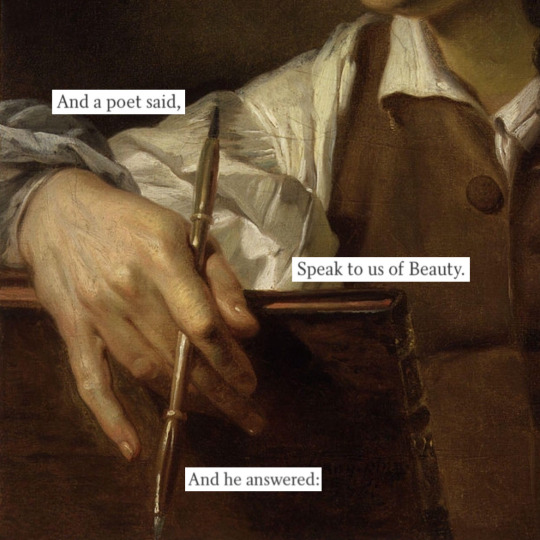
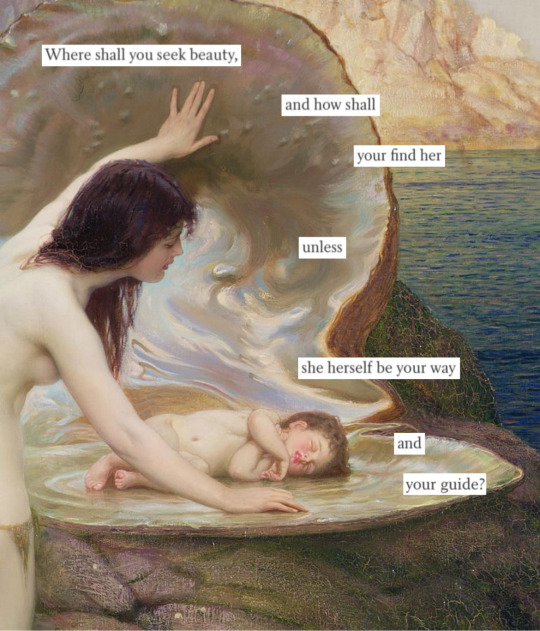
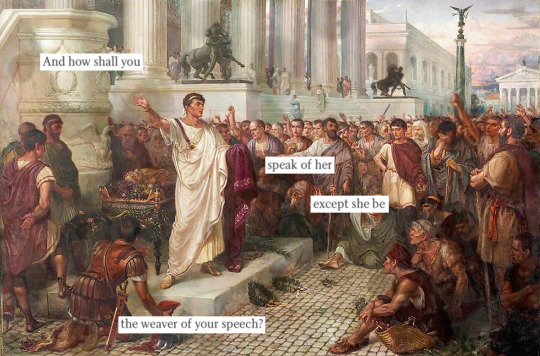
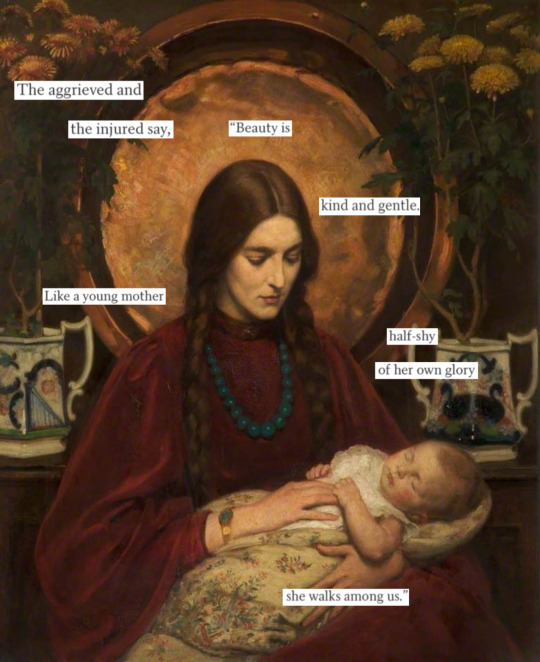
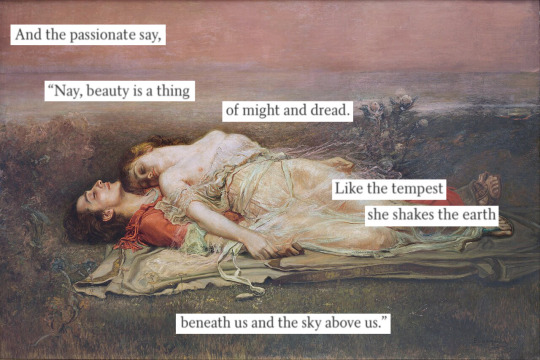
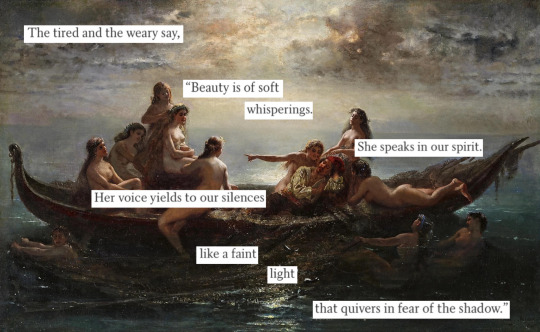
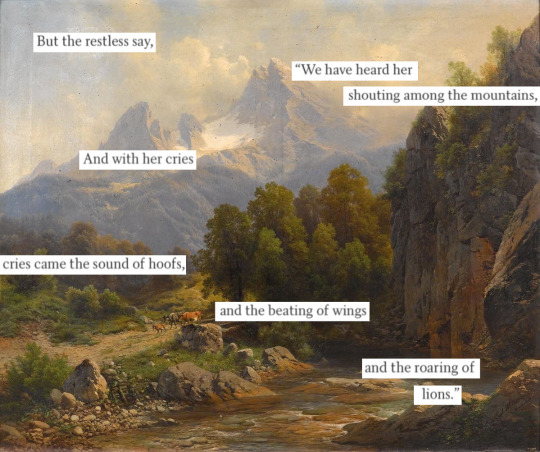
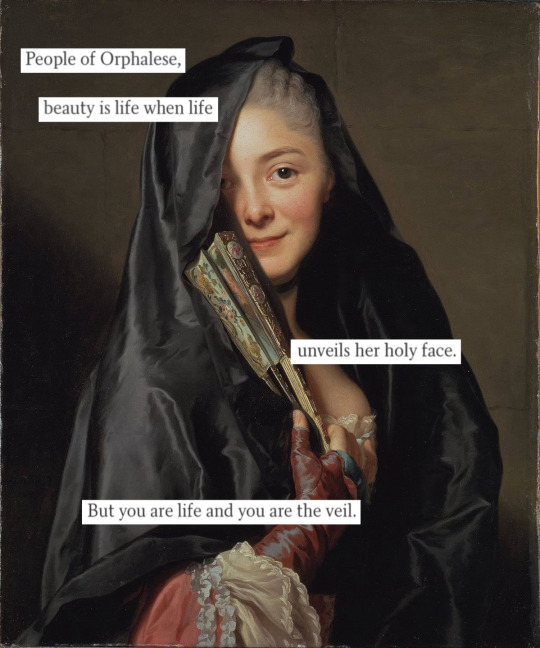
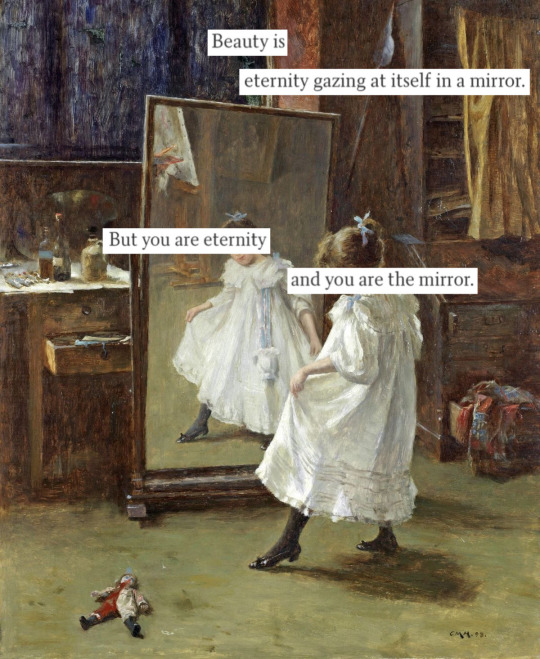
ON BEAUTY, by Kahlil Gibran (1923)
Johan Joseph Zoffany, by Johan Joseph Zoffany (1791); // A Water Baby, by Herbert James Draper (1900); '// Julius Caesar', Act III, Scene 2, Marc Antony's Oration, by William Holmes Sullivan; // A Little Sleep, by Frank Samuel Eastman (1906); // Tristán e Isolda (La muerte), by Rogelio de Egusquiza (1910); // Sleeping Fisherman with Mermaids, by Wilhelm Kray (1869); // View of the Watzmann, by Karl Millner (1863); // The Lady with the Veil, by Alexander Roslin (1768); // The Studio Mirror, by Charles Martin Hardie (1898).
#webweaving#web weaving#web weaves#poem#poetry#beautiful#beauty#on beauty#seeking beauty#aesthetic#spilled poetry#spilled thoughts#spilled ink
64 notes
·
View notes
Text

George III by Johan Joseph Zoffany (1771) "Johan Josef Zoffany’s 1771 portrait of George III reflects at once his aspiration to be a patriot king and the discord eroding the unity of his empire. The oil painting is so unlike any previous royal portrait that it created a sensation when it was first displayed. Never before had a British monarch been portrayed in such an informal manner. The setting, with its elaborate gilded table topped with marble and a finely upholstered chair, is elegant, but not regal. A tricorn hat and sword take the place of the crown and scepter usually depicted in royal portraits. Zoffany portrayed the king as a self-confident, untroubled man, at ease in his role. He looks relaxed and resolute. His right arm rests casually on the arm of the chair. His left hand rests on his thigh, pointed in the direction he is looking, out of the frame to the viewer’s right."
The American Revolution institute
8 notes
·
View notes
Text

Johan Joseph Zoffany ( 1733 - 1810) Charles Towneley in his Sculpture Gallery
0 notes
Text

^ JOHAN JOSEPH ZOFFANY (FRANKFURT 1733-LONDON 1810) George III (1738-1820), Queen Charlotte (1744-1818) and their Six Eldest Children 1770

^ BENJAMIN WEST (1738-1820), Queen Charlotte (1744-1818) Signed and dated 1779
Detail:


^The Royal Family of England in the year 1787 - in the centre King George III (1738 - 1820), and Queen Charlotte Sophia (1744 - 1818), surrounded by their children.

^Thomas Gainsborough, series of fifteen portraits probably commissioned by Queen Charlotte of the royal family. They were painted at Windsor in September and October 1782.

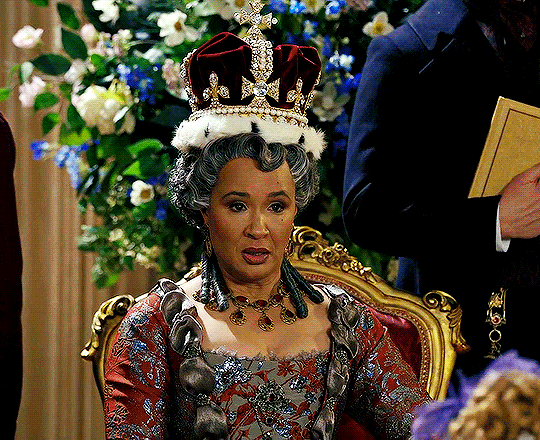


#family portraits, am i right?
511 notes
·
View notes
Text
johan joseph zoffany, david with the head of goliath [x]
0 notes
Text

Self-portrait as David with the head of Goliath Johan Joseph Zoffany
#german art#Johan Joseph Zoffany#art#painting#art history#portrait#conceptual#self portrait#19th century#david and goliath#neoclassicism
195 notes
·
View notes
Photo

Queen Charlotte (1744-1818) with her Two Eldest Sons
Johan Joseph Zoffany, 1764 Oil on Canvas
128 notes
·
View notes
Photo

Cove Ferris and Romeo in Johan Joseph Zoffany, Charlotte, Princess Royal and Prince William, later Duke of Clarence.
#johan zoffany#johan joseph zoffany#royal family#spirwell#manipulations#charlotte princess royal#prince william duke of clarance#neoclassicism#german neoclassicism
1 note
·
View note
Photo

Thomas Robson
Not in display (sold) – Pinterest
appropriated:
John Raphael Smith's after Johan Joseph Zoffany RA, German, active in Britain (from 1760), The Watercress Girl, 1780.
#Thomas Robson#digital collage#mix#impasto#colour#overpaint#defaced#John Raphael Smith#engraving#Johan Joseph Zoffany#printed#splat#humour
8 notes
·
View notes
Text

Self Portrait as David with the Head of Goliath
Artist: Johan Joseph Zoffany RA (German, 1733-1810)
Date: 1756
Medium: Oil on canvas
Collection: National Gallery of Victoria, Melbourne, Australia
Description
This, the earliest known self-portrait of by Zoffany, was attributed to Mengs when sold in auction in 1989. Subsequent cleaning revealed Zoffany's signature, together with the date 1756, on David's belt. Zoffany was twenty three years old and towards the end of his first stay in Rome when he decided to portray himself as the biblical hero David, at the moment following his defeat of the Philistine Goliath (1 Samuel 17:50).
Zoffany depicts himself as the young and beautiful David wearing a sheepskin hat at a rakish angle and with heavy swathes of a sheepskin cape draped behind him. In his left hand he holds the stone with which he - a young and relatively diminutive shepherd boy - has struck Goliath on the brow, felling, and thus slaying, the powerful giant. Zoffany plays down the gruesome aspects of the scene, concealing the neck's wound on Goliath's severed head and making only subtle allusions to blood.
The interpretation of the subject is sensual, even homoerotic, an aspect of the picture that is investigated by Michael Watson writing in the Art Bulletin of Victoria in 1995. Zoffany's emphasis on David's physical beauty - his muscular yet smooth and effeminate form, the undulating line of his back against the cape, the touch of sheepskin against the skin, the slightly parted lips, and the intense engagement of the gaze - has precedents in earlier interpretations of this subject by Donatello, Guido Reni and others.
William L. Pressly, writing in the art journal Apollo in 1995, has suggested that, in representing himself as David victorious over Goliath, the young Zoffany - anxious to prove his skills - conceived of himself as 'the anointed one', victorious in his challenge to the old masters.
Text by Dr. Ruth Pullin from Painting and Sculpture before 1800 in the international collections of the National Gallery of Victoria, Melbourne, 2003, p. 106.
#self portrait#oil on canvas#johan joseph zoffany#german painter#sheepskin hat#sheepskin cape#belt#goliath's head#stone#german art#artwork#european art#painter#painting
15 notes
·
View notes
Text
Sartle School of Art History: Academic Art

If there was ever a College Board for artists, it would be the art academies of the 17th and 18th centuries, specifically the Academie des Beax-Arts in France. It was founded under Louis XIV, who was just nine at the time, but grew to be a huge patron of the arts as part of his rule over France, making state control over the arts as a tenant of his absolute power. His approach to life is perhaps best summarized through its enshrinement in the Palace of Versailles.

Hyacinthe Rigaud, Louis XIV, 1701.
The first chancellor of the academy, court painter to Louis XIV, Charles Le Brun, ruled with the same fervor as his king, establishing guidelines for artists to follow in order to create good art. His theoretical approach to art set a hierarchy of genres. History was the most prestigious genre, followed by portrait, genre, landscape, animal, and still life. Le Brun also had rules about what was in the paintings and how they were painted calling it the “royal style,” devoted to glorifying the king. The subject matter was to be classical or Biblical and done in the classical style.
Over in England, the Royal Academy of Arts was founded under King George III in efforts to establish Britain as a center of the arts. Its first president, Joshua Reynolds, was also as opinionated as Le Brun, devoting a lecture series delivered at the Academy entitled Discourses on why art should have allegorical conceit.

The Ladies Waldegrave by Joshua Reynolds at the Scottish National Gallery
The academies promoted a distinct style of classical ideals and highly finished surfaces composed of teeny tiny brushstrokes, or “licked surface”, that left no traces of the artist’s touch. This was enforced through their control over the exhibitions through the yearly Paris Salon, which the academy chose the pieces for, and education through the artists’ rite of passage, the Grand Tour, which reinforced the legacy of classical antiquity and the Renaissance.
Some of the artists exemplary of this style were Poussin and David whose harmonious, geometric compositions of classical subject matter fit all the conventions for the perfect history painting. Their works were popular with the royal and imperial patrons who, through the rationality of their compositions, promoted Enlightenment values like rational thought and loyalty to the state.

Death of Germanicus by Nicolas Poussin at the Minneapolis Institute of Art
Poussin was trained in Italy in the classical tradition, bringing his love of the classical to France. His paintings were utilized by Louis XIII and Cardinal Richelieu, and his style of clarity, logic, and order was adopted as the royal style. Although the subject matter of his paintings were allegorical, they had anchors to contemporary events, designed to promote loyalty to the state by depicting stories of said state loyalty from antiquity. David had a similar approach, glorifying the government through imagery of the Roman empire at its pinnacle, however his time was marked by political turmoil. He lived during the end of the Ancient Regime, including the overthrow of the monarchy during the revolution and the establishment of the French Republic. He was able to maintain favor during both, applying his aptitude for propaganda to support both governments.

Philosopher Lecturing at the Orrery by Joseph Wright of Derby at the Derby Museum and Art Gallery
This desire for rationality flowed into the educational institutions which applied the same scientific approach to the creation of art. Art was made into an intellectual pursuit instead of technical, raising the status of the artist. The academy set a standard arts education procedure, and aspiring artists went through vigorous training through study, first learning to draw from ancient sculptures until they were allowed to attend a life drawing class where studied human anatomy by drawing live models. This hazing of future artists instilled in them the principles and doctrines of the academy, ensuring a set standard which all artists conformed. Artists who the Academy favored set the standards for future artists. Watteau and Fragonard, Rococo artists known for their expressive colors and brushwork rather than concentration on line that defined Neoclassicism, were recognized by the Academy even though their style did not embody their teachings. The Academy not only set the standard but also broke it, the style not unchanging but flexible.

The Academicians of the Royal Academy by Johan Joseph Zoffany in the Royal Collection
The Academy was in control of the content of art as well, as the major patron as well as the gatekeepers and tastemakers, it commissioned and favored works that conveyed moral messages and loyalty to the state. The largest patron was the state, and regular royal patronage was established in 1774 in France, increasing competition for coveted commissions and yielding yearly exhibitions of art designed to further political agendas. The Academy was wrought with nepotism, and artists like Jean-Baptist Pierre, who were trained and worked in the Academy, gave preference to those who conformed to the Academy’s standards and emulated the style. He chose topics that were designed to imbue certain virtues, glorifying French history and moralizing the French public.

Exposition au Salon de 1787 by Pietro Antoni Martini at the Met Museum
However, as these institutions lost control through periods of political upheaval, most notably the French Revolution, and the art market changed to cater to the tastes of the new middle class, artists who opposed this canon emerged. History painting made way to ambiguously categorized snapshots of everyday modern life as patrons willing to pay the high cost of producing them slowly waned and bourgeois patrons who did not have deep knowledge of art wanted something to hang in their bedroom walls. As art became a more popular industry, catering not only towards the tastes of aristocratic educated elite, the long process required to produce a history painting led to the slow decline of the genre that was emblematic of the Academic style.

The Tennis Court Oath by Jacques-Louis David at Versailles
Attempts to adapt the format to the changing interests and quickly changing political climate led to pieces like David’s The Tennis Court Oath, which was abandoned because the subject, a scene from the revolution, was irrelevant by the time it was completed and because David struggled to find a patron.
To keep up with the changing tastes, the Salon de Refuses was established to exhibit the paintings that were deemed not good enough for the official Salon. Here the works of avant garde artists like Courbet, Manet, and Pissarro were showcased, ushering a new era of convention-breaking art.
By: Abby Li
#academic art#art history#history of art#art theory#art history 101#royal academy#sartle school of art history#charles le brun#joshua reynolds#nicolas poussin#joseph wright of derby#Johan Joseph Zoffany#jacques-louis david
5 notes
·
View notes
Text

David with the head of Goliath, 1756, oil on canvas Johan Joseph Zoffany German (1733-89) National Gallery of Victoria Melbourne
0 notes
Photo

Johan Joseph Zoffany, The Academicians of the Royal Academy, 1771-72
9 notes
·
View notes
Photo

Detail of Charlotte, Princess Royal, holding a doll, from a portrait of her with members of her family done by Johan Joseph Zoffany.
#Johan Joseph Zoffany#charlotte of the united kingdom#princess royal#18th century#house of hanover#long live the queue
110 notes
·
View notes